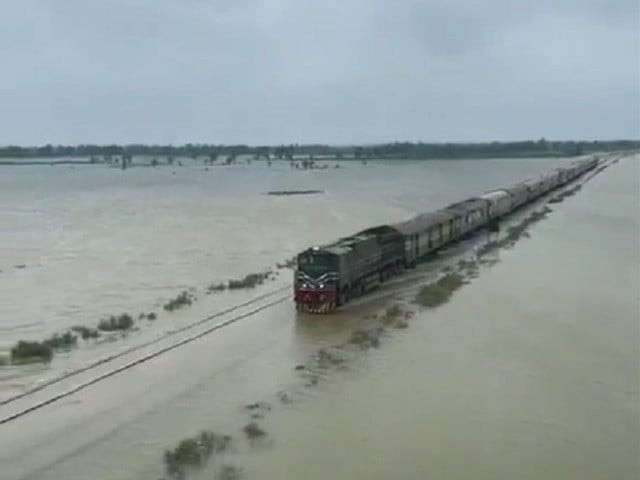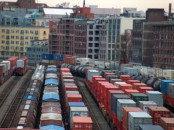Floods and economic shock
It’s time for country to revisit priorities, reallocate resources

Visuals of the devastation caused by the floods to private and public property across the country are heart wrenching.
If you are living in a mud house, and your asset is one cow or two goats, and they are suddenly lost in front of you in a matter of hours, your life is shattered.
If you are a small or even large farmer, and your sugarcane or cotton crop of the season is destroyed, you will be exposed to a significant shock, which can lead to indebtedness. This is the story of hundreds and thousands of households today in Pakistan.
Estimation of loss is a precondition for effective intervention, and one needs to take visuals and headlines with caution. I will offer my back-of-envelope estimate of losses to the private property due to these floods. As more data is flowing in, this can be considered a preliminary estimate.
The loss to agricultural part of the rural economy is significant. As crops standing on 2 million acres have been flooded, though may not be completely destroyed, it suggests a loss of 8.33% of agricultural production, as Pakistan has approximately 60 million acres of cropped area.
We lost cotton crop on about 1.84 million acres, which translates into Rs337 billion, a loss of almost one-third of the anticipated production this year.
Rice crop was affected too as 602,120 acres out of 8.74 million acres were destroyed. Sugarcane crop on 729,582 acres out of a total of 3.11 million acres was affected.
The headlines are suggesting widespread loss of livestock, which constitutes 60% of Pakistan’s rural economy or, in other words, 14% of gross domestic product (GDP).
However, in reality, the total loss caused by these floods to the livestock economy is insignificant.
Current numbers indicate a loss of 719,000 livestock animals, out of a total stock of 137 million heads, which means we have lost 0.52% of the livestock economy.
For a farmer owning one buffalo, this aggregate representation is a fiction, however, from the economic planning perspective, this is manageable.
The floods have also destroyed or damaged close to 1 million homes, out of which 30% houses have been completely destroyed.
I estimate that the total loss to the private property, in which I count homes, livestock and crops is around Rs1,024 billion, or 1.48% of GDP. This comes to around $4.56 billion.
Almost 50% of this loss can be attributed to the loss of residential properties.
For arriving at this number, I have assumed Rs500,000 as average loss per house, Rs50,000 as average price of the animal, and used current prices of cash crops including sugarcane, rice and cotton.
This estimate does not include loss to the public infrastructure such as roads, schools and bridges.
Government has announced a loss of $10 billion and issued international appeal. The response to these appeals so far suggests that Pakistan will most likely have to rely on its own resources. This is an uphill task but not impossible.
What is the role of state and market here?
Reallocation of resources should be the top priority of the federal and provincial governments now. The governments need to sit down together, freeze PSDP and re-appropriate the development budget to ensure rehabilitation in the shortest possible time.
If the federal and provincial governments redirect 25% of their development spending, sufficient resources can be created within the current resource envelope.
We need to protect farmers from shocks. Market offers insurance as a mechanism to mitigate the risks faced by the farmers.
Given the high risk of climate change-induced floods in the future, an appropriate insurance mechanism for crops, livestock and even properties should be introduced – something that Dr Nadeemul Haque recently indicated.
This will provide a safety mechanism for the recovery of principal loss for owners and will provide a signal for developers in the future.
Another suggestion is adopting open trade policies. In neighbouring India, onion is currently being sold at Pakistani Rs25 per kg (wholesale) and tomatoes at Pak Rs51 per kg (wholesale).
We can open Wagah border to benefit our consumers, who are forced to buy these commodities at 10 times these prices.
According to Finance Minister Miftah Ismail, some international organisations have also requested to source relief goods from India. We should use this crisis to change policy and keep the borders open.
It is ironical that we can display “prade” on our border but cannot open it for trade.
Recalling the defence helicopters, which were on display on March 23 this year, I wonder if we instead should now invest in helicopters and technologies, which can help in relief operations.
These floods offer a sobering reminder to revamp the approach to resource utilisation. Let’s remember those five brothers in Kohistan whom we could not save.
The writer is executive director of PRIME, an independent economic policy think tank based in Islamabad
Published in The Express Tribune, September 5th, 2022.
Like Business on Facebook, follow @TribuneBiz on Twitter to stay informed and join in the conversation.



















COMMENTS
Comments are moderated and generally will be posted if they are on-topic and not abusive.
For more information, please see our Comments FAQ